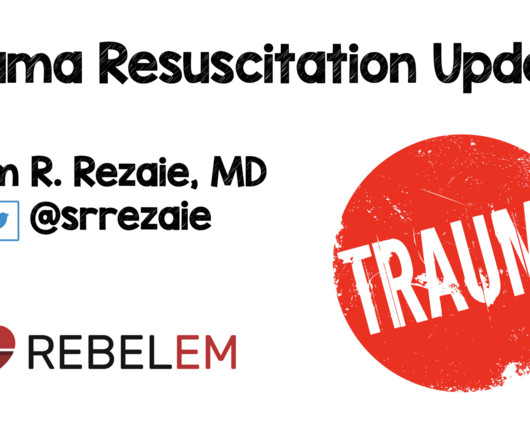Little People, Big Updates: Updates in Pediatric Emergency Medicine
EM Ottawa
OCTOBER 5, 2023
Do you remember when every newborn under 30 days with a fever needed an LP/admission/blood cultures? Well. times are a little different but its nuanced. The goal of this update is to provide a practical update in pediatric emergency medicine to the average Canadian adult or community emergency clinician. We will review the following three […] The post Little People, Big Updates: Updates in Pediatric Emergency Medicine appeared first on EMOttawa Blog.












































Let's personalize your content